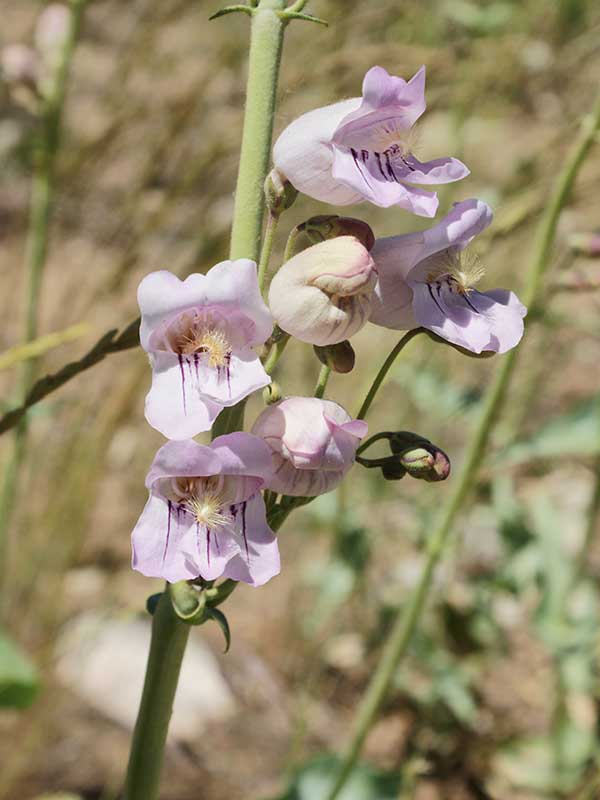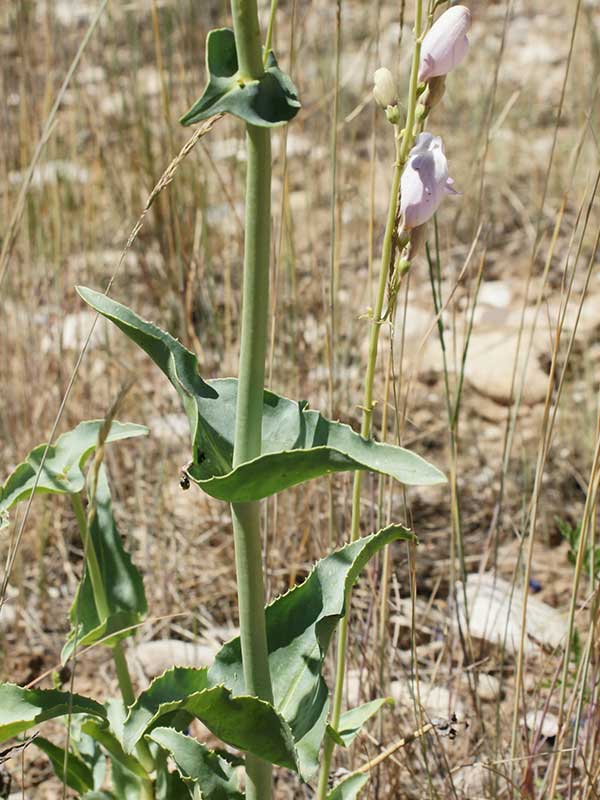Penstemon palmeri / Palmer’s penstemon
- very tall, exposed
- pink flowers with rose/grape scent
- flowers clumped on one side of stem in groups of 4-5
- red “guidelines” (bloody fangs) on lower petals
- stem leaves opposite, clasping, like little boats
Also known as: scented beardtongue, balloon flower
There are a number of characteristics of Palmer’s penstemon that make it unmistakable and easy to identify. First, it can be really tall, up to 6 feet. Considering that it is usually in the open and in drier areas, this really makes it stand out.
Second, the leaf shape, color, and manner of attachment to the stem are enough for ID even before it flowers. The leaves are succulent (thick and juicy) and arranged on opposite sides of the stem. They are blue-green, and have toothed margins, and clasp the stalk so tightly they make little boats that catch water.
Third, the flowers (of course). The inflorescence is the part that gives the plant its height. It is a panicle or raceme with 2-4 flowers clumped together at nodes, and all on one side of the stem. If you’re close enough to examine them, you should also be close enough to appreciate their fragrance, sort of grape-ish, or rose-like. The fragrance distinguishes this species from other pink penstemons. It is also partly why it attracts hummingbirds.
The flowers are pink (to violet to blue-purple, and to red, yellow or white) and showy. They are rounded, and remind me of large popcorn kernels. Their “bulbous” shape is the reason that some call the plant “balloon flower”. Most also have darker pink/red guidelines (bloody fangs) on the lower lip and inside the throat. Each also sports a prominent staminode (a sterile stamen) like a lock of golden hair.
Palmer’s penstemon is a short-lived (4-5 years) evergreen perennial. It grows from a thick crown. Its fibrous taproot can reach more than 3 feet deep. Thus, it prefers well-drained, drier soils, but can access water lying far below the surface. It does well with the amount of rainfall hitting the Valley (ca. 17 inches) but once established, can get by on less than 10 inches. It is most common in openings, disturbed sites and grasslands.
You may find this along the Teton Creek Corridor pathway, east of the transfer station.
| Blossom size | |
|---|---|
| Color | |
| Family | |
| Inflorescence size | |
| Inflorescence type | |
| When? | |
| Where? |



